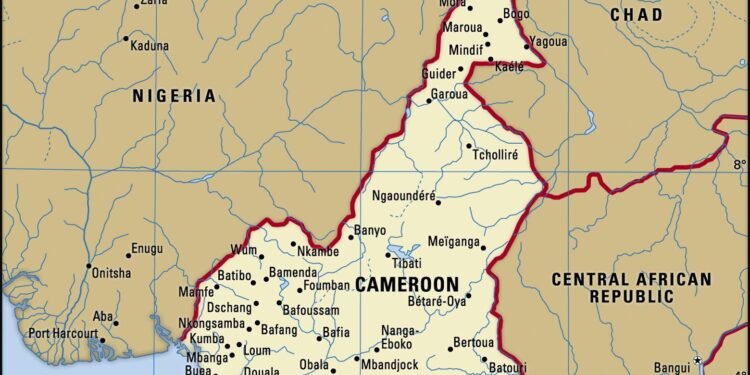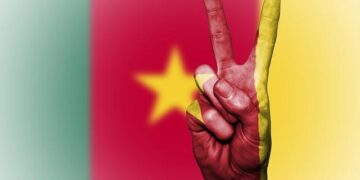Cameroon has announced an ambitious target to complete Phase II of the Yaoundé-Douala Highway by 2028, a critical infrastructure project aimed at enhancing connectivity between the country’s political and economic hubs. This announcement comes as part of the government’s broader strategy to improve transportation networks and stimulate economic growth in the region. The Yaoundé-Douala Highway is not only vital for domestic trade and travel but also serves as a crucial artery for regional commerce, linking Cameroon to neighboring countries. As officials outline the timeline and plans for this significant undertaking, stakeholders are keenly observing how this development will impact the nation’s infrastructure landscape and economic prospects in the coming years.
Cameroon Aims for 2028 Completion of Yaoundé-Douala Highway Phase II
The Cameroonian government has officially announced its ambitious goal to complete the second phase of the Yaoundé-Douala highway project by 2028. This infrastructure initiative is seen as a critical step toward enhancing connectivity between the two major cities, thereby facilitating trade and boosting economic development in the region. The proposed improvements will not only reduce transit times but also promote safer transportation for both goods and passengers. Key features of the project include:
- Expansion of two-lane segments to four lanes for better traffic flow.
- Improved road safety mechanisms, including better signage and improved lighting.
- Environmental considerations to minimize the ecological impact during construction.
To support this endeavor, the government has secured funding through a mix of public funding and international partnerships. This will help accelerate progress and ensure that the project adheres to the anticipated timeline. Additionally, the upcoming improvements are expected to create numerous job opportunities in construction and related sectors, thus contributing to local economies. A recent statement from the Ministry of Public Works highlighted the project’s significance by outlining the projected benefits:
| Benefit | Description |
|---|---|
| Economic Growth | Stimulates local business and trade activities. |
| Job Creation | Offers employment in construction and maintenance. |
| Travel Efficiency | Reduces travel time between Yaoundé and Douala. |
Impact on Regional Trade and Connectivity: Key Benefits of the Highway Upgrade
The upgrade of the Yaoundé-Douala Highway is poised to significantly enhance regional trade and connectivity across Central Africa. With improved road conditions, transportation efficiency will be maximized, reducing travel time and vehicle operating costs. This will not only benefit local businesses but will also attract foreign investment by providing greater access to markets. The anticipated key advantages of the highway upgrade include:
- Boosted Economic Growth: Enhanced infrastructure is expected to stimulate commerce, leading to an increase in trade activities.
- Job Creation: The construction and subsequent use of the highway will generate employment opportunities in various sectors.
- Increased Accessibility: Rural areas will have better access to urban centers, facilitating the movement of goods and services.
- Regional Integration: The highway will serve as a vital link between Cameroon and its neighboring countries, promoting cross-border trade.
In addition to economic benefits, the improved highway will strengthen logistical networks crucial for both import and export activities. The project, part of a broader effort to modernize transport infrastructure, is expected to enhance the overall efficiency of cargo transit in the region. A preliminary assessment has revealed the following projected impacts:
| Impact Area | Projected Improvement |
|---|---|
| Travel Time | Reduction by 30% |
| Trade Volume | Increase by 25% |
| Logistics Costs | Decrease of 20% |
| Access to Markets | Improvement for 50+ rural communities |
Strategic Recommendations for Successful Project Execution and Funding Solutions
To ensure the successful execution of the Yaoundé-Douala Highway Phase II project by the 2028 deadline, leaders should prioritize collaborative planning among key stakeholders, including government agencies, local communities, and international partners. Establishing a robust communication framework will facilitate transparency and trust, essential components in effectively managing resources and timelines. Key strategies include:
- Stakeholder Engagement: Regular consultations with affected communities to gather input and mitigate disruptions.
- Risk Management: Identifying potential challenges early and developing contingency plans to address unforeseen delays.
- Capacity Building: Investing in training programs for local labor to enhance skills relevant to construction and project management.
Additionally, exploring diverse funding solutions will be crucial for sustaining momentum throughout the project’s development. Financial partnerships can be strengthened through:
- Public-Private Partnerships (PPPs): Leveraging private investment to share risks and rewards.
- International Grants: Seeking funding from multilateral organizations aimed at economic development and infrastructure upgrades.
- Green Financing: Attracting funds dedicated to sustainable infrastructure projects, emphasizing environmental considerations in design and execution.
In Retrospect
As Cameroon accelerates towards its goal of completing the Yaoundé-Douala Highway Phase II by 2028, the ambitious project is set to enhance regional connectivity and bolster economic growth. With significant investments and strategic planning, the government aims to improve infrastructure that is crucial for trade and mobility in one of Africa’s key corridors. The successful realization of this initiative not only promises to ease transportation challenges but also holds the potential to stimulate local economies and improve living standards along the route. As stakeholders remain committed to this vision, all eyes will be on the progress and developments that lie ahead, signaling a new chapter in Cameroon’s infrastructural landscape.














Italy to Deport Egyptian Imam After Controversial Comments at Pro-Palestine Rally